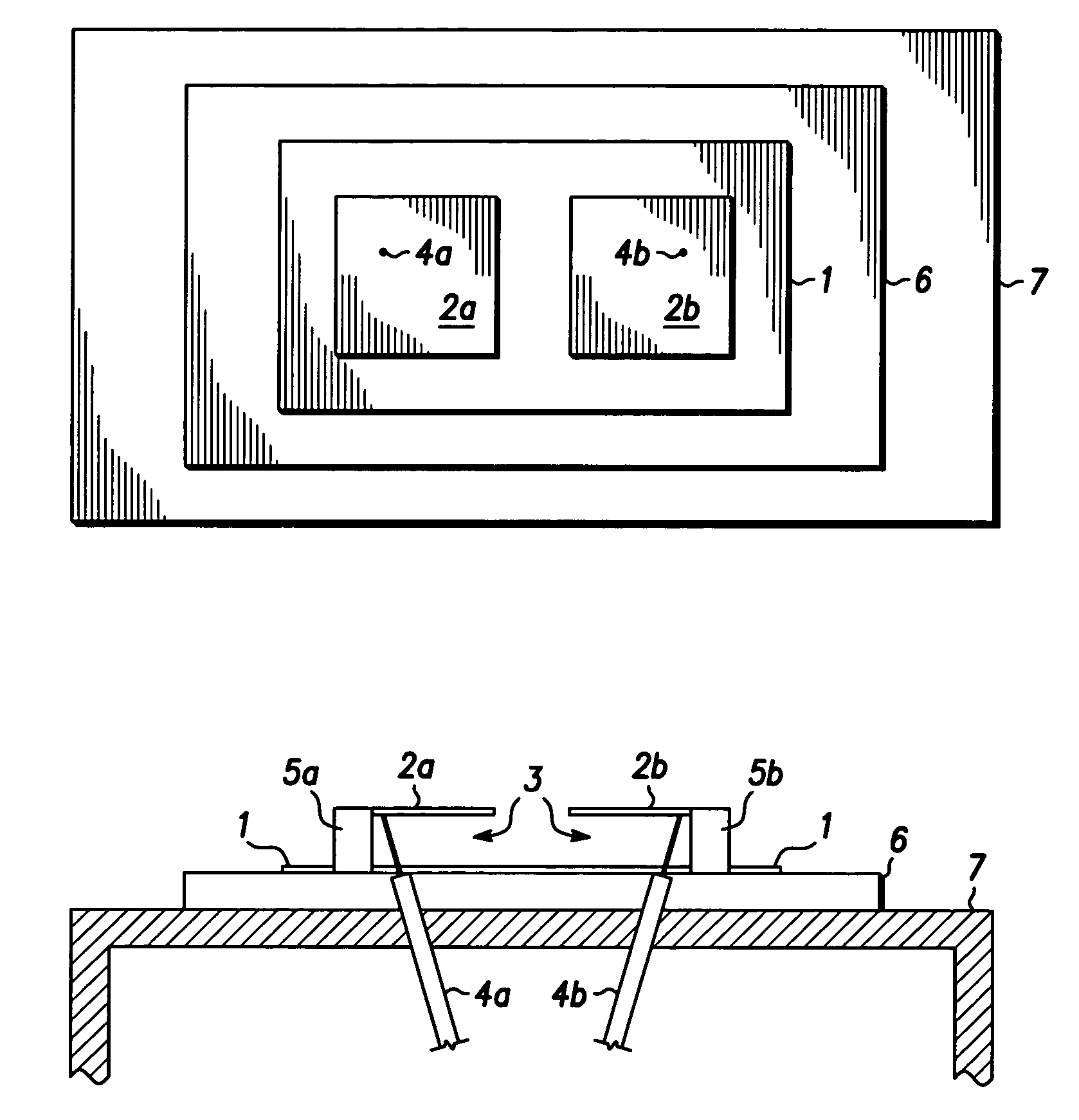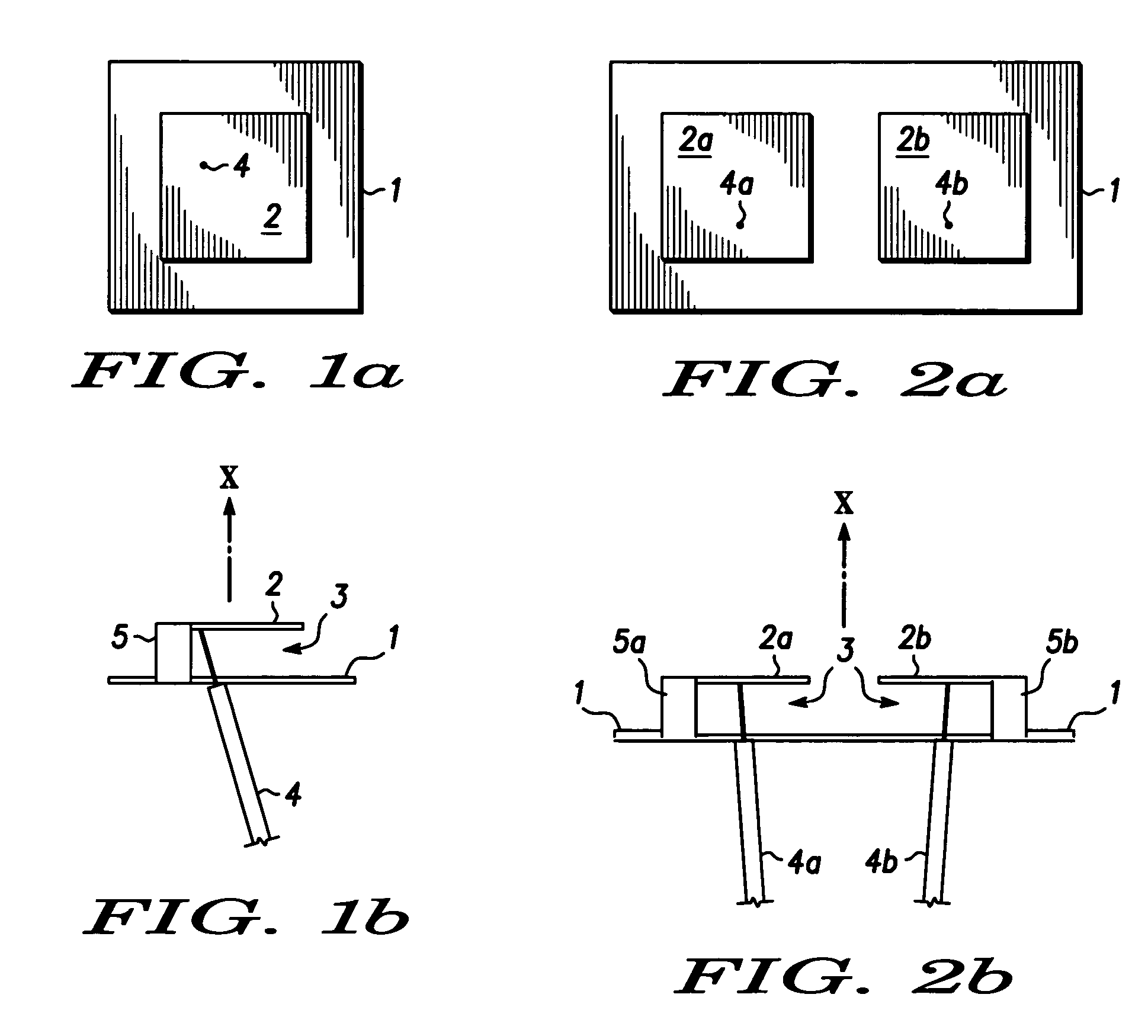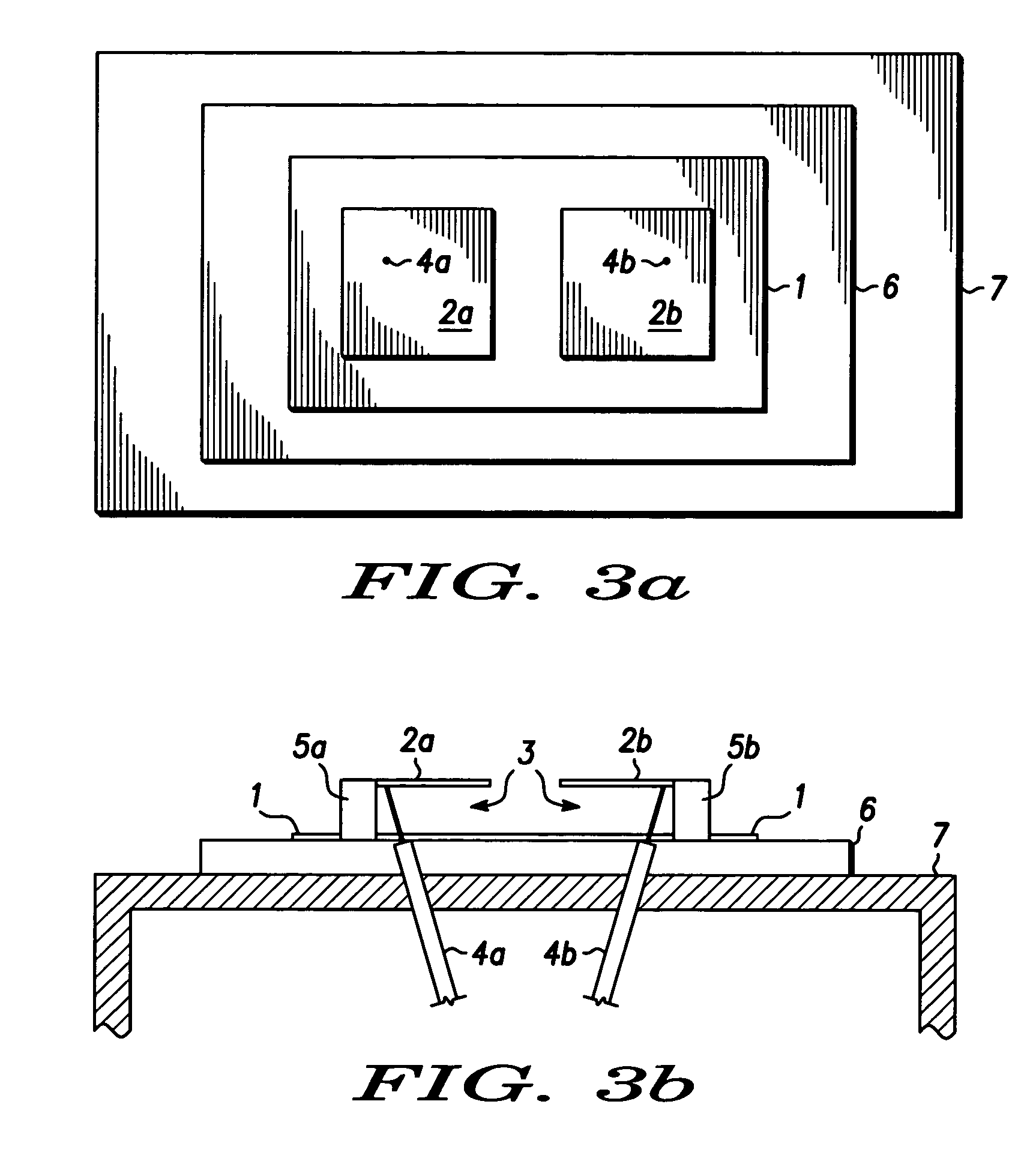Antenna structures and their use in wireless communication devices
a technology of antenna structure and wireless communication device, which is applied in the direction of polarised antenna unit combination, resonant antenna, independent non-interacting antenna combination, etc., to achieve good omnidirectional radiation pattern, high peak gain, and good operational performan
- Summary
- Abstract
- Description
- Claims
- Application Information
AI Technical Summary
Benefits of technology
Problems solved by technology
Method used
Image
Examples
Embodiment Construction
[0026]FIGS. 1a and 1b show one known form of a typical PIF antenna. FIG. 1a shows a plan view and FIG. 1b shows a side view of the same antenna. The PIF antenna includes a conducting ground plane 1, a conducting radiation element 2 parallel to the ground plane 1, a dielectric insulating material 3 (which can be air) between these and a signal feed line 4. The feed line 4 includes an inner conductor and an outer conductor. The inner conductor connects the radiation element 2 to active R.F. transceiver circuitry (not shown). The outer conductor connects the ground plane 1 to active R.F. transceiver circuitry (not shown). A grounding pin 5 electrically connects the ground plane 1 and the radiation element 2. R.F. signals produced by the transceiver circuitry are fed via the feed line 4 to the radiation element 2 and are transmitted by the radiation element 2 into the surrounding space. Similarly incoming R.F. signals are picked up by the element 2 and passed for reception to the R.F. t...
PUM
 Login to View More
Login to View More Abstract
Description
Claims
Application Information
 Login to View More
Login to View More - R&D
- Intellectual Property
- Life Sciences
- Materials
- Tech Scout
- Unparalleled Data Quality
- Higher Quality Content
- 60% Fewer Hallucinations
Browse by: Latest US Patents, China's latest patents, Technical Efficacy Thesaurus, Application Domain, Technology Topic, Popular Technical Reports.
© 2025 PatSnap. All rights reserved.Legal|Privacy policy|Modern Slavery Act Transparency Statement|Sitemap|About US| Contact US: help@patsnap.com



